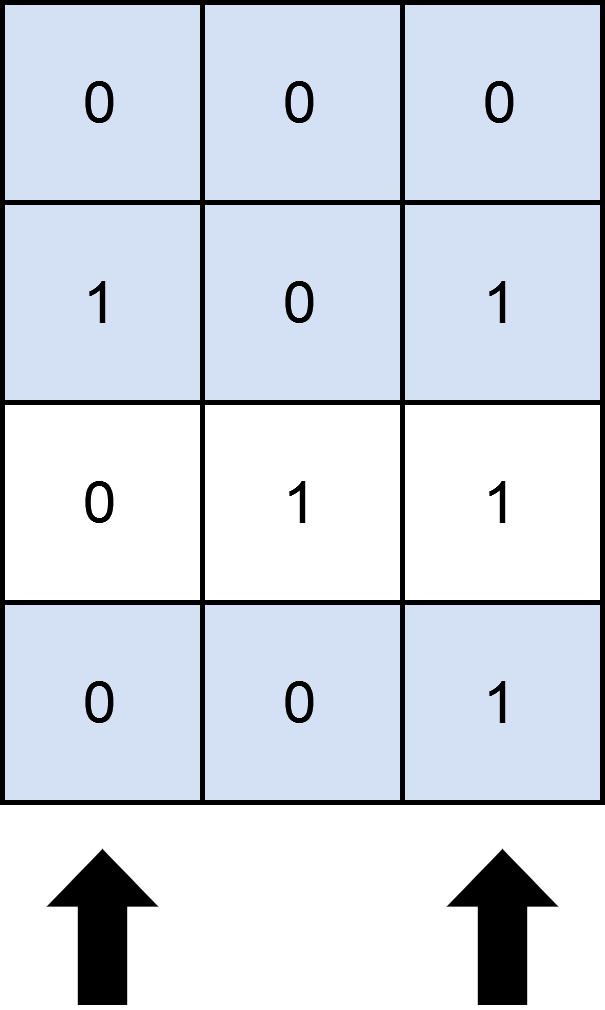Problem
You are given a 0-indexed m x n binary matrix matrix and an integer numSelect, which denotes the number of distinct columns you must select from matrix.
Let us consider s = {c1, c2, ...., cnumSelect} as the set of columns selected by you. A row row is covered by s if:
For each cell
matrix[row][col](0 <= col <= n - 1) wherematrix[row][col] == 1,colis present insor,No cell in
rowhas a value of1.
You need to choose numSelect columns such that the number of rows that are covered is maximized.
Return **the *maximum* number of rows that can be covered by a set of numSelect columns.**
Example 1:

Input: matrix = [[0,0,0],[1,0,1],[0,1,1],[0,0,1]], numSelect = 2
Output: 3
Explanation: One possible way to cover 3 rows is shown in the diagram above.
We choose s = {0, 2}.
- Row 0 is covered because it has no occurrences of 1.
- Row 1 is covered because the columns with value 1, i.e. 0 and 2 are present in s.
- Row 2 is not covered because matrix[2][1] == 1 but 1 is not present in s.
- Row 3 is covered because matrix[2][2] == 1 and 2 is present in s.
Thus, we can cover three rows.
Note that s = {1, 2} will also cover 3 rows, but it can be shown that no more than three rows can be covered.
Example 2:

Input: matrix = [[1],[0]], numSelect = 1
Output: 2
Explanation: Selecting the only column will result in both rows being covered since the entire matrix is selected.
Therefore, we return 2.
Constraints:
m == matrix.lengthn == matrix[i].length1 <= m, n <= 12matrix[i][j]is either0or1.1 <= numSelect <= n
Solution (Java)
class Solution {
public int maximumRows(int[][] mat, int cols) {
int m=mat.length;
int n=mat[0].length;
int[] s=new int[n];
return f(0,m,n,cols,mat,s);
}
public int f(int ind,int m,int n,int cols,int[][] mat,int[] s){
if(cols==0){
int count=0;
for(int i=0; i<m; i++){
//supposing that this row is valid
boolean selected=true;
for(int j=0; j<n; j++){
//if any cell of this row violates the given two conditions, then the row is discarded
if(mat[i][j]==1 && s[j]!=1)
selected=false;
}
if(selected)
count+=1;
}
return count;
}
int ans=-1;
for(int i=ind; i<n; i++){
s[i]=1; //do
ans=Math.max(ans,f(i+1,m,n,cols-1,mat,s));
s[i]=0; //undo / backtrack
}
return ans;
}
}
Explain:
nope.
Complexity:
- Time complexity : O(n).
- Space complexity : O(n).